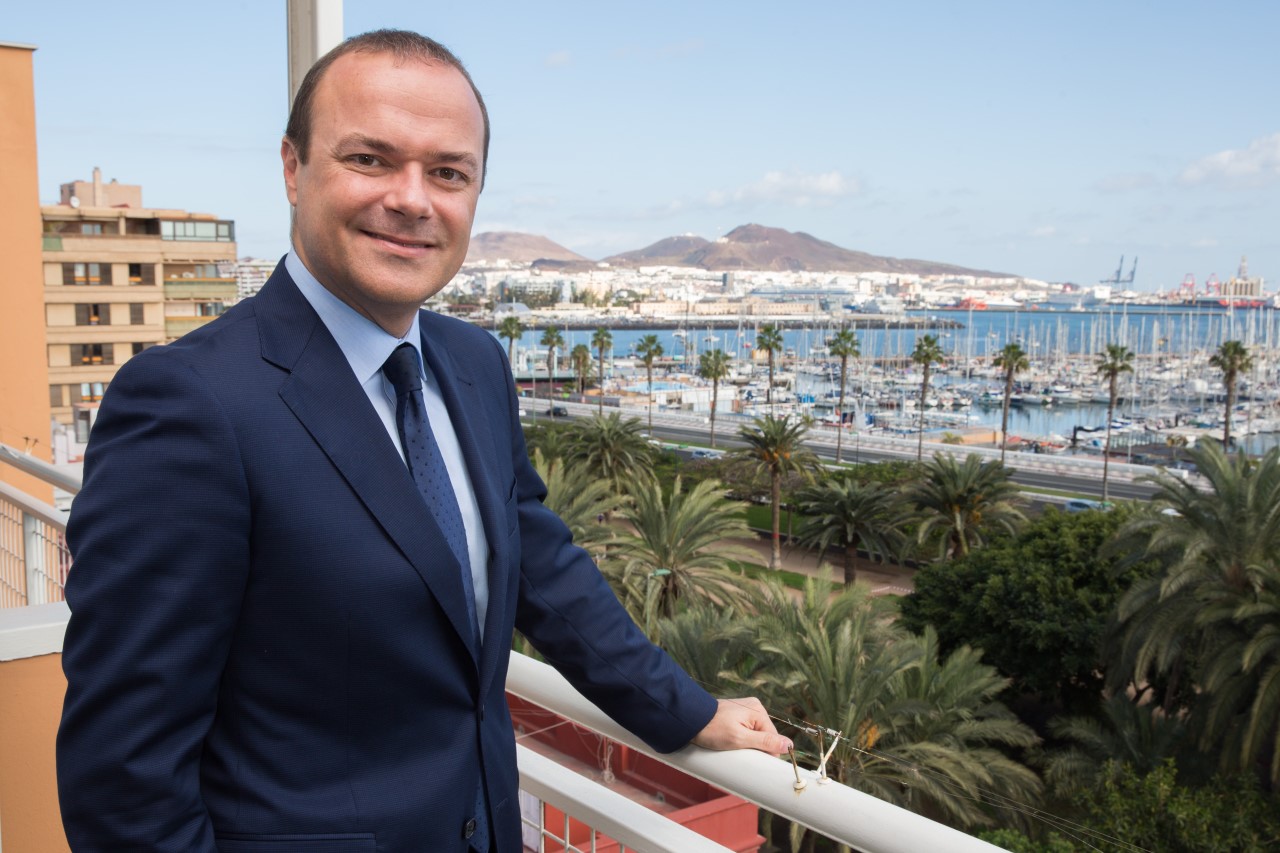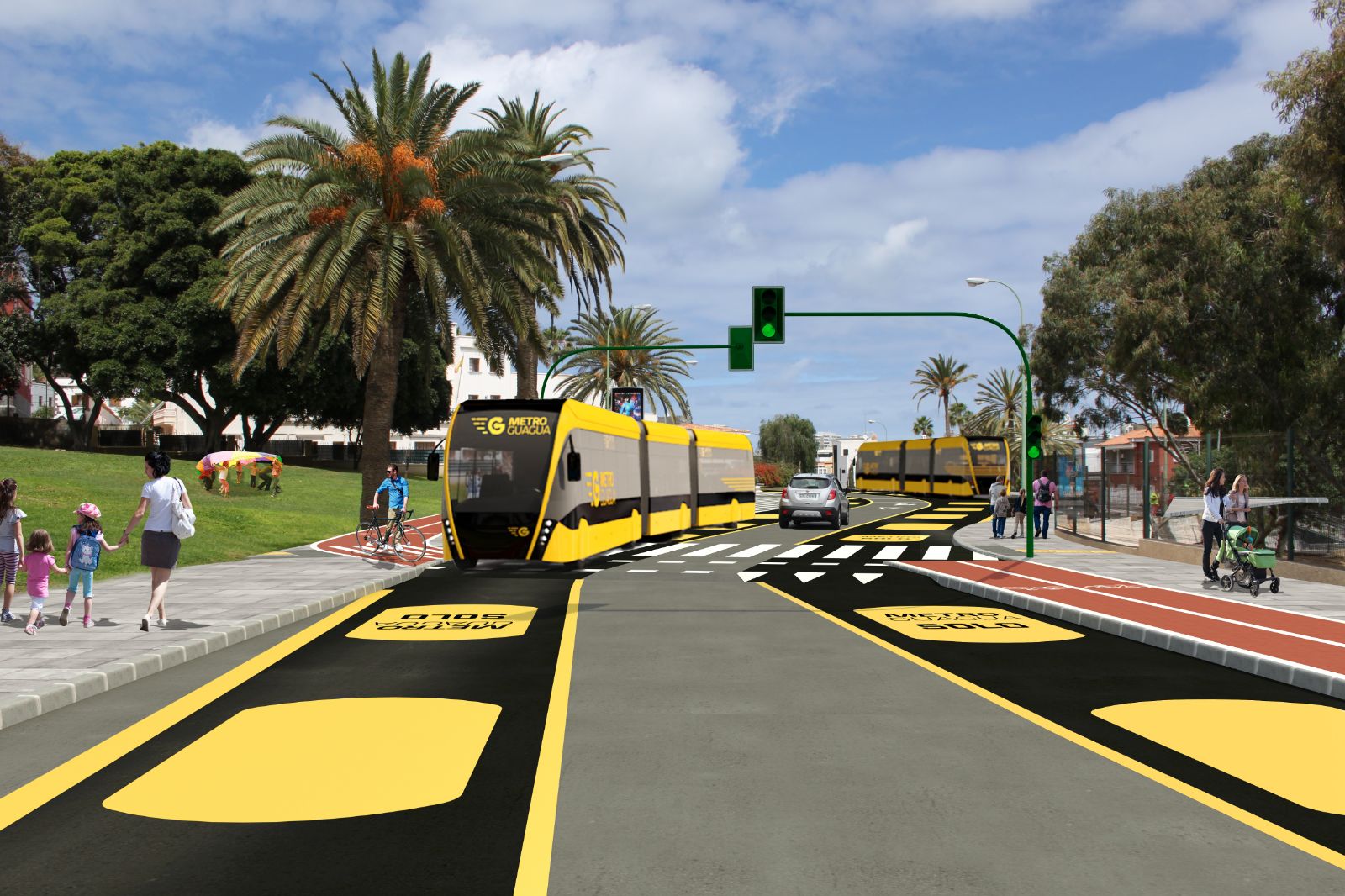Spain’s first bus rapid transit will transform the way people move - and breathe - in the capital of Gran Canaria, Las Palmas.
In the 19th and 20th centuries many Canary Islanders emigrated to Cuba. As a result, Canarian customs have become Cuban traditions and vice versa. Cuban Spanish is very close to Canarian Spanish: for example, in both countries buses are known as guaguas.
There are plenty of guaguas serving the most populated city of the Canary Islands, Las Palmas de Gran Canaria. The city has historically developed along two natural bays, with a peninsula sprouting to the north-east. With time, the residential areas have settled on the surrounding hills, cut through by ravines. The geography makes design and planning for urban mobility a challenge.

This summer the Las Palmas bus company Guaguas Municipales - which already provides the traditional guaguas – and the municipality will implement an ambitious project to tackle the challenge of moving people around the city. It’s called MetroGuagua.
“With the current guaguas, it can take up to 50 minutes to go from Hoya de la Plata to Manuel Becerra,” says Augusto Hidalgo Macario, Mayor of Las Palmas, describing a trip through a busy section of the city. “With MetroGuagua, it will take 20 minutes, whether there is traffic or not. It is a mobility revolution, transforming the whole urban setting of the city.”
The MetroGuagua project will provide a bus rapid transit system, comprising:
- a segregated 11.7 km double lane for buses,
- three bus stations,
- 17 stops, one every 500 metres,
- 17 hybrid-electrical buses carrying 4 500 passengers in a peak hour
- a traffic management and control system at the junctions.
With a EUR 50 million loan, the European Investment Bank backed half the total cost of the loan.
New mobility concept
Aligned to the main road axes of the lower part of the city and broadly parallel to the seashore, it will run from the southern fringes of the city at Hoya de la Plata, to the seaport in the north at Manuel Becerra, passing through the historical and commercial districts. 75% of daily journeys within the city take place in this area. Reliable transport infrastructure is crucial.
“MetroGuagua is a high capacity solution,” says Mayor Hidalgo Macario. “It will be the first bus rapid transit system in Spain.”

Augusto Hidalgo Macario, Mayor of Las Palmas de Gran Canaria
Las Palmas has historically been highly dependent on private cars. “This is a revolutionary plan for a city where 67% is private car modal share. MetroGuagua will promote a modal shift from private to public, in the most cost-effective way,” says Doramas Jorge-Calderón, senior economist at the EIB. He was also born and grew up in Las Palmas.
MetroGuagua will not only improve public mobility in the lower part of the city, but will also “enable the restructuring of the entire network, improving journeys and waiting times in the periphery,” adds Elena Campelo, the EIB engineer working on the project.
The EIB loan is backed by the Investment Plan for Europe, the first such project in the Canary Islands. The Investment Plan’s EU budget guarantee crucially allows the Bank to take higher risksand lend to municipalities under conditions that wouldn’t otherwise have been possible. The EIB loan has facilitated the long-term financing on favourable conditions, both in terms of repayment periods - up to 20 years - and interest rates.
“The loan was given to the bus company, which then passed on the favourable conditions to the municipality,” explains Hidalgo Macario. “The EIB loan was key in bringing the project forward and crowding in private sector resources.”
Delivering benefits along the way
The construction phase will start in July 2017, providing up to 1000 jobs, in a region with unemployment over 25%.
After that, the project will cover the purchase of 17 low-floor articulated buses: hybrid or electric vehicles, depending on “what is available and best on the market at that moment,” says Hidalgo Macario.

MetroGuagua works are expected to finish in 2021. The new bus transit will be:
- flexible: “The shape of the city naturally fits a dedicated fast lane which, exceptionally, can also be used for other transport modes. This wouldn’t be possible with a tram,” says Elena Campelo.
- fast and reliable: The new buses will go from the current 13km/h to 20km/h and will run every 5 minutes.
- cost-effective and implemented in a relatively short amount of time, especially compared to a tram or a metro.
- high-capacity and comfortable: Each bus will carry 170-190 passengers. In the lower part of the city, the bus transit alone will carry 14 million passengers each year, against the current 10 million.
- environmentally-friendly: The new buses are less polluting. A new bicycle lane will be created and the sidewalks bordering the new bus lanes will be widened.
The MetroGuagua project qualifies for the financing under the Cleaner Transport Facility, a new initiative launched by the EIB and European Commission to assist investments in cleaner transport projects.
“MetroGuagua will further enhance the vibrancy of our city and the quality of life of its citizens, young people first. My daughter will make the most out of it,” says Hidalgo Macario, smiling.
